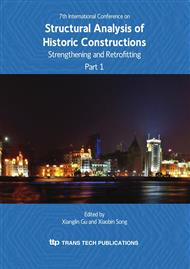p.43
p.53
p.65
p.79
p.97
p.107
p.113
p.119
p.125
Archeological Excavations: The "Trauma" and other Consequences on Structural Conservation of Buildings and Sites
Abstract:
Previous infill, unearthed and archeological excavations have a major influence on the structural and physical status of buildings and ruins in urban and archeological areas. Archeological excavation is like an "anaphylactic shock” on the excavated structure. Mortar, stone and wood quickly change their performance and bring about a dramatic transformation/alteration in the structure's elements and its whole stability. As in a state of anaphylactic shock if you do not intervene promptly the excavated structure can “die off” explicitly and completely disintegrate. Archeological excavation also reveals peculiar structural elements that were in use but never viewed or studied from the engineering point of view. These elements of the buildings and sites could be either structural connections in strange angles or unstable structure-stone- frames in current day standards and/or static calculations, that did not collapse in the past earthquakes. Studying this archeological-engineering issue might result in a better understanding and therefore implementation of the conservation of excavated sites and buildings.
Info:
Periodical:
Pages:
97-103
Citation:
Online since:
October 2010
Authors:
Keywords:
Price:
Сopyright:
© 2010 Trans Tech Publications Ltd. All Rights Reserved
Share:
Citation:


